Tasmania’s best gardens: Wychwood, Hobart’s royal botanical, Old Wesleydale
For the green-fingered traveller, paradise is found amid the thriving plots of the Apple Isle.
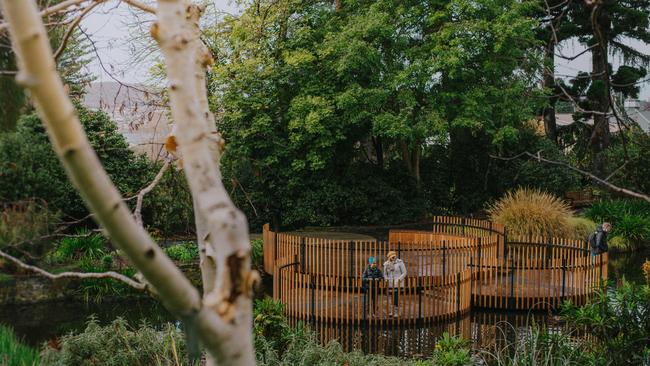
Sydneysiders may covet a little Georgian cottage in downtown Hobart, and every city wants its own MONA but for mainland gardeners, a Tassie acre or two would do; somewhere to recreate a little slice of England or France.
I’m testing this theory as I set out on a self-guided tour of the best gardens in Tasmania beginning in Hobart’s Royal Tasmanian Botanical Gardens. On a perfect summer’s day, a cool breeze is whipping up from the Derwent River and the lovely gardens are fairly thrumming with colour. Founded in 1818, the 14ha parklands contain significant built heritage, most notably two impressive convict-constructed stone walls that look like they belong in one of those grand country piles in Britain.
The first, built under governor George Arthur, formed part of an enormous pineapple house, complete with furnaces, fireplaces and hidden piping, back when growing pineapples was all the rage in Blighty. It remains one of the best examples still standing in the world. The second wall, built under governor John Eardley-Wilmot, is regarded as something of a vanity project, although the wily Guv claimed it might help to deter grasshoppers.
The gardens are dominated by these walls and enormous trees. Below the visitors centre, a sprawling cork oak, magisterial in reach and heft, was grown from an acorn said to have been carried from Blenheim Palace. Late last century this beloved tree was put at risk, not from grasshoppers but an insidious honey fungus, a calamity that galvanised Tasmanians, green-fingered and otherwise. All sorts of remedies were posited, including the unsavoury suggestion of donkey urine. One morning, the horticultural team stumbled upon a pair of robed druids standing beneath the tree reading incantations from a large leatherbound book. In the end, science came to the rescue (although it may have been the druids).

Hobart’s botanical gardens are significant for being the first to welcome honey bees to Australia. Today there are also bumblebees lumbering about the vegetable patch like striped teddy bears in search of a picnic. Fans of ABC’s Gardening Australia will be familiar with this patch, made famous by presenter Peter Cundall and now a community project. The Giant Atlantic pumpkins, propped on crates, are coming along nicely. These gargantuan squash are grown for competition (last year, the crop produced at neighbouring Government House pipped these at the scales).
Elsewhere there’s an excellent collection of Tasmanian trees, ferns and plants, and the Subantarctic Plant House, which recreates the environs of Macquarie Island, complete with frigid breezes and the recorded and redolent cries of elephant seals.
A day spent mooching about this delightful park reminds me why, at the height of a South Australian summer, I toss and turn in my bed at 3am as the mercury refuses to fall below 30C, and dream of making a beautiful garden in cool Tasmania. It’s a move I ponder the next day as I motor the Midland Highway to Launceston, keeping my eyes peeled for little Georgian gems with unkept rose gardens that I might buy for a song.
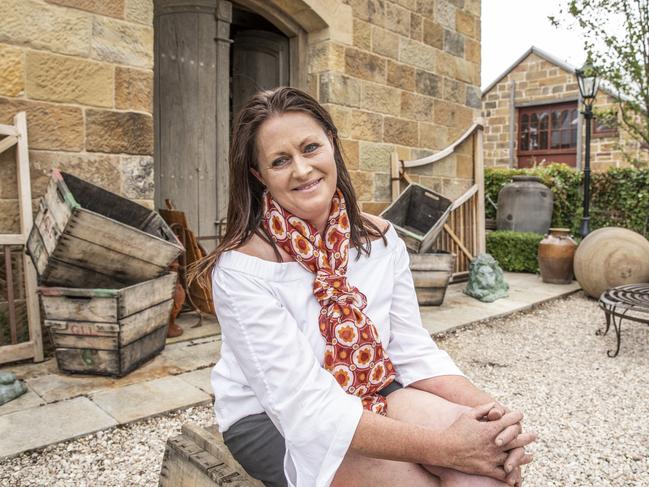
Detouring into pretty Oatlands (claiming the largest collection of intact Georgian buildings in the country) for lunch at the new Imbibers, I discover tucked down a gravel path behind a pretty Georgian house, the loveliest garden shop in Australia. The Jardin Room doesn’t stock plants, rather French fountains, pots, statues and attendant gardening frou-frou arrayed across owner Debbie Wilson’s pretty grounds and stone barn. After spending an hour calculating how I might squeeze a large urn into my carry-on, I instead half fill the boot of my rental car with little antique terracotta pots then set off for Launnie. My destination is the new Hotel Verge, an uber contemporary property with stylish pared-back guestrooms, opposite the historic City Park, so claiming a garden setting by default.
From Launceston it’s an easy hour’s drive to Mole Creek and Wychwood, one of the best gardens in Tasmania, set in the shadow of the Great Western Tiers. This is tiger and devil country. The roads are empty, the scenery spectacularly beautiful. I feel I’ve fallen off the end of the world into some sort of gardening paradise where the Tasmanian wild bumps into a sweetly cultivated English idyll.
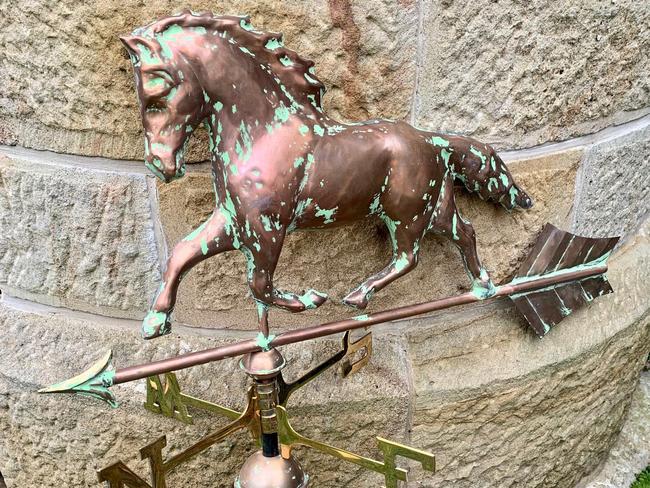
Wychwood lies hidden behind quivering trees along a quiet lane lapped by golden grasses with views in all directions to the mountains. The scenery alone can put this garden on our list of the best gardens in Tasmania. There’s not a soul to be spied until owner and erstwhile plant hunter Matt Bendall tips up with Leon, a boisterous Black Russian terrier. When Bendall and his partner David Doukidis took on the garden nearly five years ago, a once-in-a-century flood coincided with moving day, washing away great swathes of ground. They’ve worked hard to restore the property, and a rare plant nursery now stands at the entrance.
Wychwood was originally created over two decades by Karen Hall and Peter Cooper as a living artwork, with every detail deeply considered: the cosmic-style clipped hedges, the monastic grass labyrinth. Bendall and Doukidis have honoured this legacy, restoring its potent sense of magic, a feeling heightened by the chilly Mole Creek, which dips underground every now and then, and is home to platypus and brown trout. Claiming a monotreme at the bottom of the garden easily trumps any number of fairies, and I’d be prepared to endure minus 13C winter days and January frosts for such a privilege.
Wychwood measures only 1ha but seems much larger, incorporating an orchard of rare apple trees, a sweet little potager and lush curvaceous borders stuffed with unusual perennials; it’s a total delight for plant nerds. With directions from Bendall — “if you pass the big devil, you’ve gone too far” — I’m back through the village, past the pub with a Tassie Tiger Bar, bound for Old Wesleydale and on the lookout for trimmed hawthorn trees, planted as hedgerows in the 1840s.
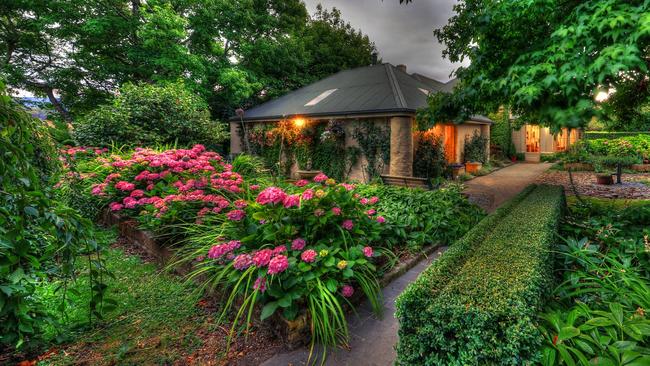
Proceeding slowly up the long driveway, I spy Wesleydale’s 1830 Georgian house, protected by a deep ha-ha, a wall recessed into the landscape that allows for an uninterrupted view while protecting the garden from livestock. In the impressively large walled farmyard, I’m met by Chops the dog and Deb and Scott Wilson, who moved here from NSW two decades ago. When they tell me, after I press them, what they paid for 100 hectares, the handsome manor house, convict-built barn and walled yard, I cry.
Of course, it’s not all beer and skittles. Just like an episode of Escape to the Chateau, the Wilsons have done almost everything themselves, toiling to create a little slice of England but bigger, fatter, brighter. Tasmania’s mild summers turbo-charge growth: there are sheets of hydrangeas with blooms the size of basketballs, serried ranks of dahlias nodding in the sun, whimsical topiary and frothy pink yarrow a metre high. Over the years Scott has mastered drystone walling and hedge laying (an ancient art championed by Prince Charles as he seeks to restore the hedgerows of Britain) and his immaculate work can be spied beyond the ha-ha and large lake overlooked by the house.
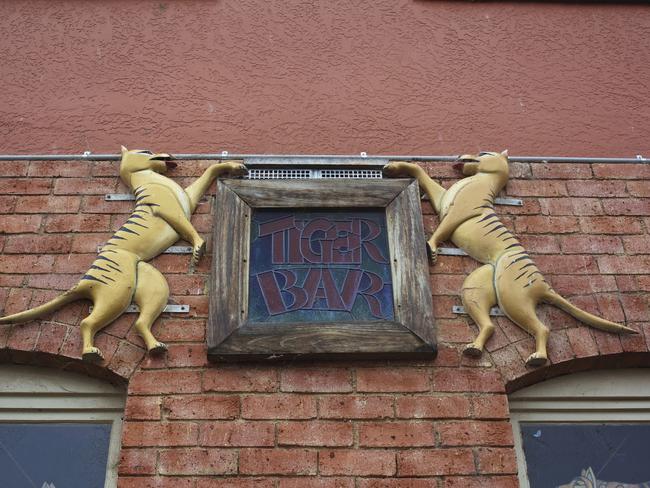
Anything that doesn’t move is afforded the benefit of his topiary shears (he runs classes on-site). Guests used to be greeted by a long line of dancing elephants until the neighbour’s cattle got into the paddock and squashed them. These days there are urns, spirals, lozenges, cloud trees and all sorts of fanciful clipped shapes.
Tucked away in one of the quietest corners of the garden is a sweet little cottage offering B&B digs, and I can’t think of anywhere lovelier to bed down. Guests have the run of the grounds, and it’s a great base for exploring this stunning part of Tasmania.
As Peter Cundall was fond of saying: “Well, that’s your bloomin’ lot.” But maybe not. I’m keeping a close eye on Mole Creek real estate.
In the know
Tours of the Royal Tasmanian Botanical Gardens depart daily at 11am. The site is steep in parts but there’s an easy access route if required. A restaurant and cafe provide views of the Derwent; the shop stocks a great selection of seeds.
The Jardin Room, 87 High Street, Oatlands, opens 11am most days.
Wychwood Garden is open Friday-Monday, 10am-4pm; admission $9. Plant sales available at the nursery and online.
The garden at Old Wesleydale is open by appointment. Cottage accommodation is $185 a night with breakfast.
Other gardens to visit near Mole Creek include Villarett, which has a restaurant.
Christine McCabe was a guest of Tourism Tasmania. This story was originally published in February 2021 and has since been updated.




